You probably want to know how you too can create an amazing brand like Nike, BMW, or Intel. How do you create an amazing brand?
I usually tell people that it is done with a lot of blood, sweat, and tears. Without some serious hustle, you will never make it.
But as my dad would always tell me, “Daniel, work smarter not harder.” The road to an amazing brand is a hard one, but if you know what you are doing it is a lot easier.
So, what is an amazing brand, and how do we get there?
An amazing brand can only truly be measured by its effectiveness. If a brand is not effective it is not an amazing brand. If the Nike swoosh was unknown, it would not be effective.
We then must aim for effective branding!
You may be wondering, why I equate amazing with effective.
The answer is simple. A brand that is not effective, no matter how objectively “amazing” it may look or seem, is BAD.
I will then be talking to you about what makes an amazing a.k.a. effective brand.
How do you make your brand effective?
Now, this is the million-dollar question. How do you make your brand effective? The answer is a little complex, so let’s roll up our sleeves and dive right in.
There are various elements of a good brand that measure its effectiveness. It begins with your brand identity then moves on to brand image and brand scaling.
Your brand identity is your name, logo, and slogan or tagline. This is a vital part of a good brand. I will talk a lot about creating a good brand identity.
Once you have a brand identity you need to start building that brand. It is important to influence your brand image. That is the idea that people have in their minds when they think of your brand.
Your brand image will largely dictate your brand effectiveness. Do people think of your company as affordable or luxurious, local or global, sleek or earthy? Make sure you create the image you want people to see and think.
But let’s not get ahead of ourselves. We should look at brand identity.
Create a Brand Identity
Your brand identity is how people identify your brand. This, of course, means that your brand must be identifiable. People will identify your brand by your name, logo, and maybe your tagline.
The colors you chose for your brand are important, but they are of secondary importance.
When you create your brand identity you will want to focus on your name, logo, and tagline.
Name
There are lots of things that you should consider when naming your brand. Here are my top eight things to think about when creating your brand name. They will give you a good starting point.
- Avoid any trademark infringement. I am not an expert in this field, but I have a general rule that I follow. I do not use a name if there is another business in the field with a similar name. This can easily be checked by running a search on Google and the US Patent and Trademark Office Database.
- Steer clear of general use names. If you name your brand “Springfield Budget Auto”, there is not much I can do to help you. Not only is Springfield used to name about 74 towns and cities in the US, but just about every town has a “Budget Auto” or two. If you make the terrible mistake of using a name that everyone else uses, may Google have mercy on your brand!
- Avoid names that have a disproportionate market dominance by another company. Let’s pretend for sake of argument that you wanted to start a company that makes a time management app. It would be a grave mistake to call your company Azure. Azure is the name of Microsoft’s cloud computing service. I don’t recommend trying to compete with Microsoft.
- Look for a name with an available domain. This is often overlooked until it is too late. Ideally, your name and your domain name are a perfect match. This is not always possible, but you should consider it.
- Use a name that is timeless. This is a hard one. The reason is that you need to be able to project the future. The greatest indicator of the future is the past. This means that following present fads is not always wise. At the current time, people like to add “ly” to the end of a business name or subtract vowels “Tumblr”. This will likely put a time stamp on your company with a big late 2000’s on it. In another 30 years, you will probably be in trouble, because it will no longer be “hip” or “cool”. It will be, “That thing my parents used.”
- Your name should be short. People are generally lazy. Long names are too bothersome. Just consider the top brands you know. A long name is an exception. Even a two-word name is out of place. Keep your name short and simple.
- Don’t make your name too clever. There is nothing clever about a computer company named Apple, or a car company named Ford. Your name does not have to be clever. It needs to identify your brand. Let your brand image strategies take care of the rest.
- Don’t lock your brand into a local market. If you commit the unpardonable sin of naming your business “Springfield Budget Auto” you will have a hard time expanding to the town of Washington next door. Aim big, name big.
If you follow these eight rules when naming your brand, you will be headed in the right direction. If you are looking for more information about how to create a good name consult the Lexicon Blog.
Logo
Creating a good logo is a lot harder than naming your brand. It takes a lot of expertise. Because of this I strongly recommend having your logo professionally designed.
However, it is important to know a good logo when you see one. Here are some rules any good logo should follow.
First, a good logo is readable.
Yes, I said readable. There are lots of logos out there that require bending over backward just to try and read. For instance, let's look at the San Francisco Muni logo.
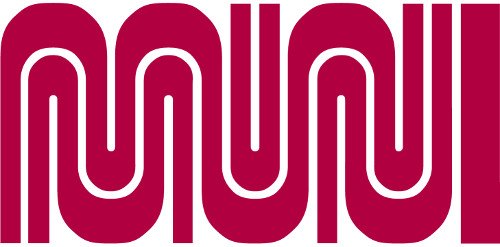
Yeah! I can’t read it either. If only I knew what these strange markings were supposed to mean! I feel like I could use an interpreter right now. This is a bad logo!
Many logos that use cursive have the same problem. Make sure your logo is readable.
Second, Make sure your logo is social.
Now, I don’t mean that it is running around making friends. I am talking about making sure your logo will work well on social media. Social media is an important part of any branding effort. The Pepsi logo is a great example of a logo that looks great on social media. Will your logo fit in that tiny box?
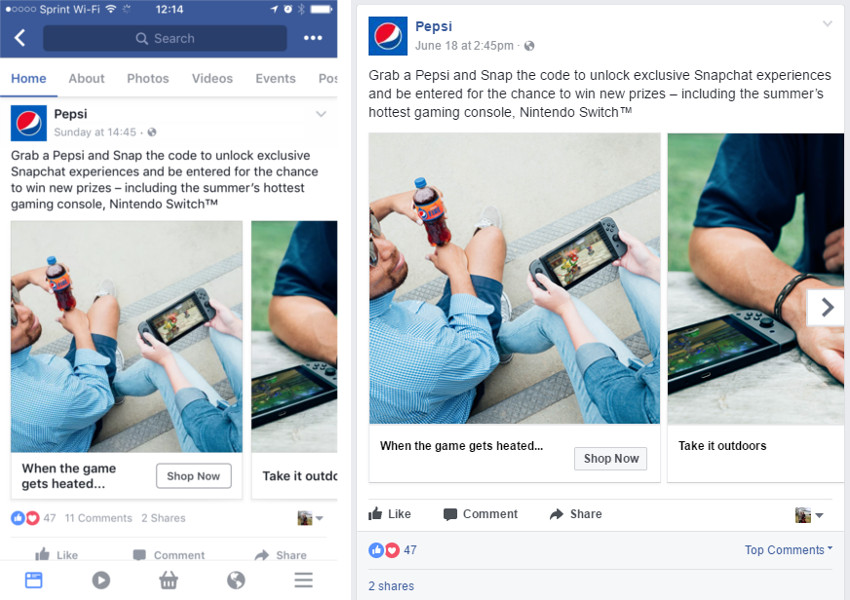
Third, reconcile your brand personality and your logo style.
Your brand has a personality. Does your logo match. Let me give you an extreme example. Imagine how we would all react if David’s Bridal decided to use the Chiller font for their logo. It would cause a serious personality problem and probably would kill their brand.
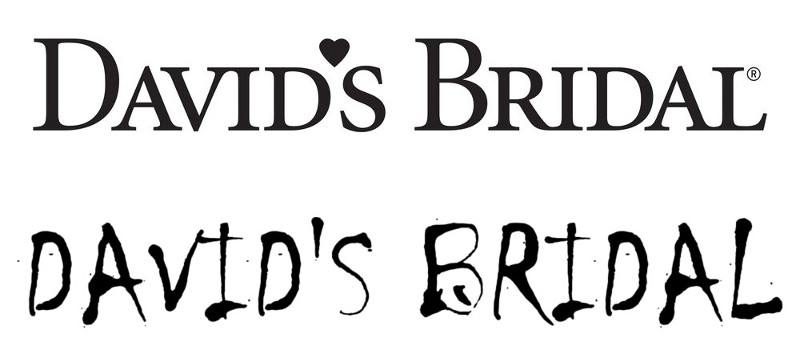
Is that hideous or what? I would expect to hear some great bridezilla stories with this logo.
Most brand logo and brand personality conflicts are not so clear. You will want to consider the brand personality you want your logo to convey. Is it stock or bespoke, traditional, or modern, bold, or delicate, plain or fancy? Knowing your brand personality is vital to creating an effective logo.
Forth,keep your logo simple.
My general rule of thumb is that a logo should be able to be reproduced by the average fourth-grade child without difficulty. If it is a complex image you will have trouble.
Fifth, avoid the WordArt look.
If your logo looks like it was created with Microsoft Office WordArt, it is time to get a new one. Just… run away! It will burn your dreams of success to the ground. Ok, maybe not quite, but just don’t do it.
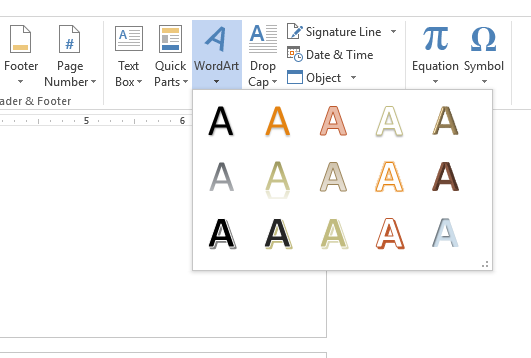
Sixth, it should look good in black and white.
This may seem a little strange, but it is important. There will be applications where using the logo in color will not be possible. Is your logo adaptive? You also need to consider people who are color blind. If you chose colors that need to contrast, make sure they do in black and white, and for someone who is color blind.

This logo would be a nightmare for someone who is Protanope or red-green color blind. It also does not look very good in gray-tone.
Seventh, your logo should be unique.
If you want people to recognize your brand, make it different. You will also want to make sure that you are not infringing on any copyrights. I recommend doing a Google image search with some keywords that describe your logo. Also, perform a search of the US Patent and Trademark Office Database.
Getting all this right can be difficult. I would recommend that unless you are a graphic designer to get your logo professionally designed. It will cost more but it will also be worth more.
Here are some places I would recommend your go to for a professional logo:
CairnTek (My company)
Tagline
I recommend most businesses have a tagline. There are a few that can get away without one, but it is unlikely you won't need one. Remember it is easier to get rid of an unneeded tagline than create one after it is too late.
When it comes to taglines there are many things that you will want to consider. Here are some of the most important.
- Keep it short and simple. If there is anything you should follow it is this. Keep it to one sentence. Now, if perhaps you have two sentences with two words in each sentence, that is okay. People will not remember a long tagline. Keep it short, simple and memorable.
- Your tagline should convey a value proposition. A good tagline is not just short it must have meaning. The most effective meaning is something that is of value to your customers. If your tagline does not carry some weight it is not likely to help your business.
- Make your tagline clever and memorable. The vital aspects of any good tagline are that it is clever, thought-provoking, and memorable. If your tagline makes people do a double-take or think about what your brand, you are doing well.
- Make it unique. If you are a local grocery store, and your tagline is “We sell food” you have a problem. This does not tell anyone anything. Don’t make your tagline so innocuous that a Google search does not bring it up. You want Google to know that your tagline belongs to your business.
Evaluate your Brand Identity
We have looked at the fundamentals of how to create a brand identity. I would like to turn your attention to three key brand evaluations. Your brand should be clear, distinct, and compelling. If it does not possess these three, it is not likely to be effective. Therefore, I recommend considering how your brand measures up in these three areas.
Is Your Branding Clear?
If you want your branding to be working for your company, it must be clear. It should not blend into everything around it as if it does not even exist. It should hold an obvious meaning if it has any imagery. If people must try and guess what your logo stands for or if you have to explain it, you need a new logo.
Another thing that should be considered is that a new generation is coming into the marketplace that cannot read cursive. Your script font may look elegant but if no one can read it, you have a problem.
The essential question you want to ask to determine the clarity of your brand identity is this. Can 99 out of 100 people understand my branding without interpretation? The easiest way to answer this question is to start asking people.
The best branding has a review process. Make sure clarity is a foundational part of this review process.
Is Your Branding Distinct?
For your branding to be effective it must be distinguishable. It should not look like anything else (especially something famous). Even worse if it sounds the same. If I have said it once, I have said it a million times. Search Google and the US Patent and Trademark Office, and any other trademark database for any state, or country that you do business in.
You should also avoid branded terms. For instance, if you make the terrible mistake of calling your company “Azure”, you will never make the first page of Google.
Your goal in making a distinct brand is recognizability and name dominance. Recognizability is the measure of how well people immediately recognize your branding as meaningful to them.
Brand Recognition is how likely someone is to recognize your brand. This is determined by how aware someone is of your brand. The three primary metrics that influence brand awareness are exposure, intimacy, and uniqueness.
Exposure is the measurement of the amount of contact a person has had with your brand. If people see your name and logo everywhere they are more likely to recognize it.
Intimacy is the measurement of how acquainted someone is with your brand. You may have noticed that you see more people driving the same model car as yours after you bought it. This recognizability comes from your intimacy with that product and brand.
Uniqueness is the measurement of how distinct your brand is. If your brand is not unique like “Budget Auto” you are less likely to be recognized. Therefore, be different.
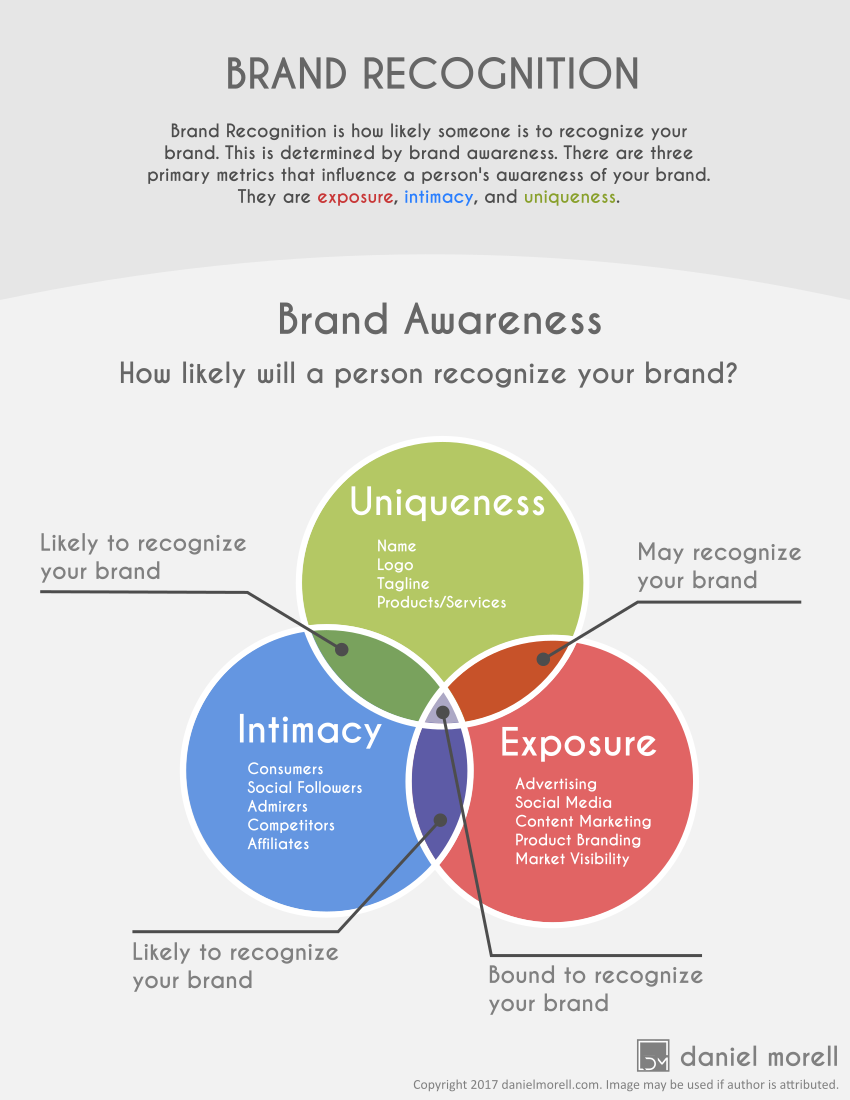
You may not be able to gain lots of exposure right away, and you may not have lots of customers, but you can be unique. Make your brand distinct.
Lastly, the importance of uniqueness is name dominance. What happens when you search for your name on Google? If your name is “Budget Auto” you may have a serious problem.
If your name is unique you will have no competition for it, and by sheer quantity of your internet presence you will have name dominance.
Is Your Branding Compelling?
Finally, your branding must be effective. It should be clear and distinct otherwise your brand is not recognizable, but it also needs to be compelling.
You may be wonder what I mean by this. It is simple. Your brand should be convincing. Making your branding compelling takes time and fineness. It is important to create a culture around your brand, not just a logo.
You will start off with just a logo. But work hard to create the business you are aiming for, and keep your branding as a prominent part of it.
You want to create consistently effective branding. That means you must have a compelling brand.
Making a brand compelling is primarily done on the emotional level. Here are some ways to tap into people’s emotions that will help make your brand compelling.
First, Speak to the person’s ego. Most people (although they don’t like to admit it) have sensitive egos. If you stroke their ego they will have an emotional response. That emotional response will help you build your brand.
Apple is a great example of a company that aims for people’s egos. Apple has focused their brand on being exclusive.
Second, Speak to the person’s greed. People’s desire for more is a key aspect of branding. If you can align your brand with a person’s innate craving for more, you will have a serious advantage. This can be done by making your brand synonymous with value.
I think a good example of this is True Car. A large part of their branding is focused on pitting you against anyone who might have gotten a better deal! If there is one thing people like better than a great deal it is getting a better deal than anyone else.
Third, Speak to the person’s fear. People are afraid of things. It is natural. But make your brand one that offers trust and security, and you will be able to capture people’s emotions.
LifeLock does this very well. Consider their name and logo. In their brand identity, they offer it would seem the security of life itself. This is tremendously intelligent. They are speaking to people’s fears with a message of security.

Forth, Tell your story. Making your brand into a story that people can connect with is a great way to touch people emotionally.
Harry’s is an example of how this can be done well. They talk about how they were frustrated with the price of razors and built their own company. This is a core part of their branding. It connects with people who want to be proud while buying something cheap (not an easy thing). But it also speaks to that rebellious part of people. The part that wants to break ranks and do something different.
If you can make your brand’s story powerful, do it. It will help make your brand compelling.
Fifth, Make people your brand’s heroes. If you want to connect with people emotionally, hold up your customers as your inspiration. This is not a simple matter of telling people that they are your inspiration. Find a couple inspiring stories from your customers, and tell them. Show people that you are inspired by doing what inspired people do, tell the world.
In my mind, there are two great examples of this. They are FedEx’s Shipping Spree commercial and SK-II’s Changing Destiny commercial. They pull on the strings of emotion and make their brand attractive and compelling.
Make your brand a champion of people and you will win their hearts.
In the end, you will want your brand to be compelling. Accomplishing this will be done by speaking to people’s emotions.
Obviously, we are blurring the lines slightly between brand identity and brand image, but that is what a compelling brand identity and message do. That is why you are aiming this direction.
Influence your Brand Image
You may be wondering what the difference is between brand image and brand identity. I can see how this might be confusing. Your brand identity is made up of your name, logo, tagline, etc. It is how people identify your brand. Your brand image is the mental concept that people have in their minds when they think of your brand.
Now, I know that I blurred the line a little when talking about making your brand compelling. However, we will look at that from the brand image side as well.
How do you create a brand image?
The short answer is that you can’t. Your brand image is a person’s perception of your brand. You cannot directly create this because it is created by the person.
You can, however, influence a person’s image of your brand. This is good and bad news for you.
It is easy to destroy a good brand image without trying. It is a lot harder to build it back up again. First and foremost, treat people honorably and graciously. After that ensure the quality of your product or service. Once all that is done well you can worry about influencing your brand image.
However, there is also good news. If you can destroy your brand image, you can also build it. This is harder, but it is well worth the effort. After all, remember how Nike is doing!
Here is a simple step by step guide on how to influence your brand image. You will find that it is similar to how you create and execute a marketing plan. However, it has the single goal of aligning a mental concept in the audience with your brand. Okay… yeah that does sound a lot like marketing.
Step 1. Define Your Audience
This is the first thing you need to do. If you do not know who you are targeting, you are up the river without a paddle.
You don’t just want to know who they are; you want to define them. Are they traditional or unconventional, conservative or aggressive, leader or follower, introverted or extroverted? The more exact you can be the better you can influence their ideas.
Because our goal is to influence your audience you will need to know what is important to them.
Step 2. Define Your Desired Brand Image
This is essentially defining your goal. What do you want people to think when they see your logo? Do you want people to think of your company as affordable or luxurious, local or global, sleek or earthy?
I have found that it is sometimes easier to come up with what you don’t want people to think. Create your own worst-case brand image scenario. Once you have created it, reverse it.
Step 3. Define Your Message
Your message is the core of your brand presentation. Your message should be heard in everything your brand touches.
When you know what your audience wants, and how you want to be seen, you can present your brand as synonymous with your value proposition.
Think about this. BMW uses the tagline “the ultimate driving machine” everywhere. It has become synonymous with BMW. But more than that they present their product as the ultimate driving machine. That is the BMW brand message.
How do you present your brand? What is your message?
Now, when you define your message keep it simple. It should be a short sentence at the most. If it is complex, it will not work. It must be short, simple and concise. But most of all make sure your message communicates your value proposition.
Step 4. Define You Methods and Tactics
Once you know the core of your message you can consider how you will disseminate that message. This is not simply a question of advertising.
You must determine how to present your message. This will include both the mediums you use and the style in which you present your message.
Your mediums will be the advertising and marketing channels you use. Where can you effectively reach your audience? It may be various social media channels, TV, print advertising, blogging, or internal channels.
Your internal branding channels are your product/service branding, your interaction with clients, and so on. You cannot forget the power of branding is the journey the consumer takes.
You must also determine the best style to present your message in. Is your message aggressive, earthy, sophisticated, traditional, luxurious, or modern? You get the picture.
You message style should match well with your brand persona. This is because your message style is essentially the presentation of your brand persona.
Get Your Image Out There
All this planning and scheming does not do much good if you don’t publish your brand. Make sure that your customer experience is consistent with your branding message.
Your goal is to influence your brand image. Be intentional, and be committed for the long haul. Rome wasn’t’ built in a day, but we still remember it thousands of years later.
Build Your Brand Until it is Amazing
Once you have determined your brand identity and have begun to influence your brand image the real work begins.
Oh… you didn’t think this was going to be easy I hope!
This is where all the blood, sweat and tears come in. Building your brand is going to be hard work. But when you reach the point where you are standing on the top of your market you will agree that it is worth it.
Let me first tell you what it is going to take to get that amazing brand you are looking for.
It will take market intelligence
Why will it take market intelligence. The answer is simple. Consider the biggest brands that seem to have developed in only a decade or two. They understood what the market was calling for.
If you want to push your brand to the top of your sector you will need to know what people want.
You will also need to be flexible to a changing market. Your market may seem stable now, but it may be thrown into disarray without warning. Keeping your finger on the pulse. You are better off taking time to test the waters than play catch up.
It will take product excellence
Knowing what the market wants and delivering a first-class product are two different things. If you want to build an amazing brand you will need an amazing product. There is no way around this.
Perfect your product. Whatever you do— do it well.
If you want people to rant and rave about your brand you first need them to rant and rave about your product or service.
It will take caring for people
Now, you can’t just offer a great product. You need to genuinely care about people. This is hard. People can be a serious pain point in any company. You will have both clients and customers that are disgruntled through no fault of your own. You will also have some people who have legitimate grievances.
How you take care of people will set a tone that will not be forgotten. It can be good or bad.
You can stand out from the crowd by genuinely caring for people. You will win their hearts. This will in turn cause brand loyalty.
If you want to build an amazing brand you will need to take care of people.
It will take hard work
All that market intelligence, product excellence, and care do not come about magically. It takes hard work and long hours. You will need to work late, think hard, and bang your head against a few walls.
If you want an amazing brand, you will need to build it one market analysis, product test, phone call, uncomfortable meeting, and late night at a time.
It will cost you blood, sweat, and tears. You will have moments where the amount of work is overwhelming.
Trust me when I say that you are not alone. I am in the same boat. This is hard work, and there is no end in sight.
It will take time
Lastly, it will take time to build your amazing brand. It may take years or it may take decades. Brands are not built overnight, and the best brands never stop building.
You will need to be committed for the long haul. You will likely be on this journey for a long time.
However, a brand that is built smart, built well, and built with the future in mind will stand the test of time.
So, take the time to do it right. You will be doing it for a while.
Conclusion
Creating an amazing brand like Nike, BMW, or Intel is a lot of work. However, if you approach branding with the “working smarter not harder” mentality, you can make it a lot easier.
So, what is an amazing brand and how do you create one?
An amazing brand is a brand that is effective. The reason I can reference Nike, BMW, and Intel is because you know their brands. You know their brand and admire it because it is effective.
Creating an effective brand starts with your brand identity. This is your name, logo, tagline. You will need to select these carefully so that people find you identifiable and attractive.
You will need to evaluate your brand to determine if it is clear, distinct and compelling. You will then need to work to influence the image that people have of your brand.
Finally, you will need to build out that brand with some serious gusto.
Building an amazing brand is hard work. But once you have an amazing brand that people know and trust your marketing and advertising becomes infinitely more effective.
Creating an effective brand is well worth the effort.
So, get out there build your company and create an amazing brand!